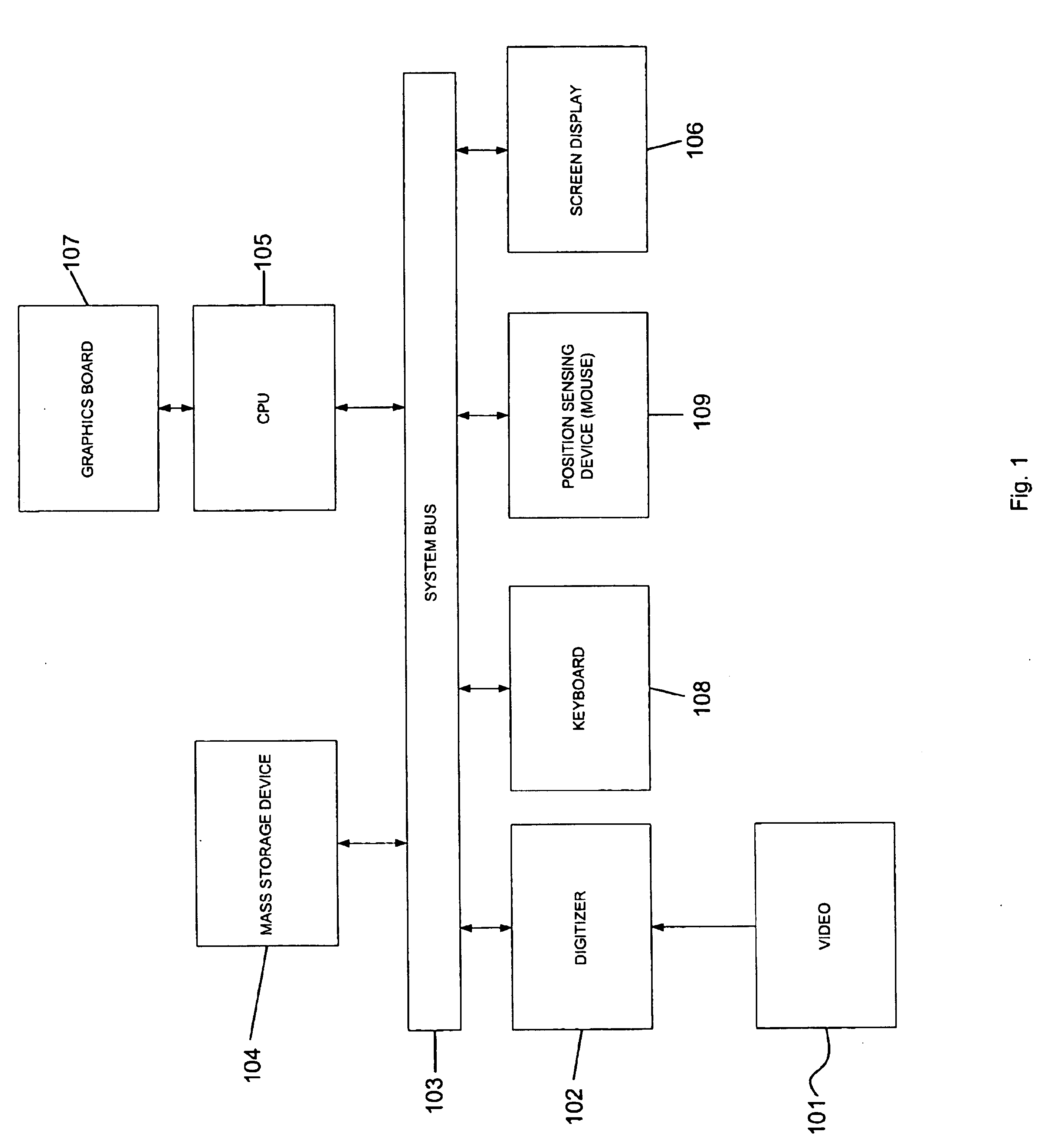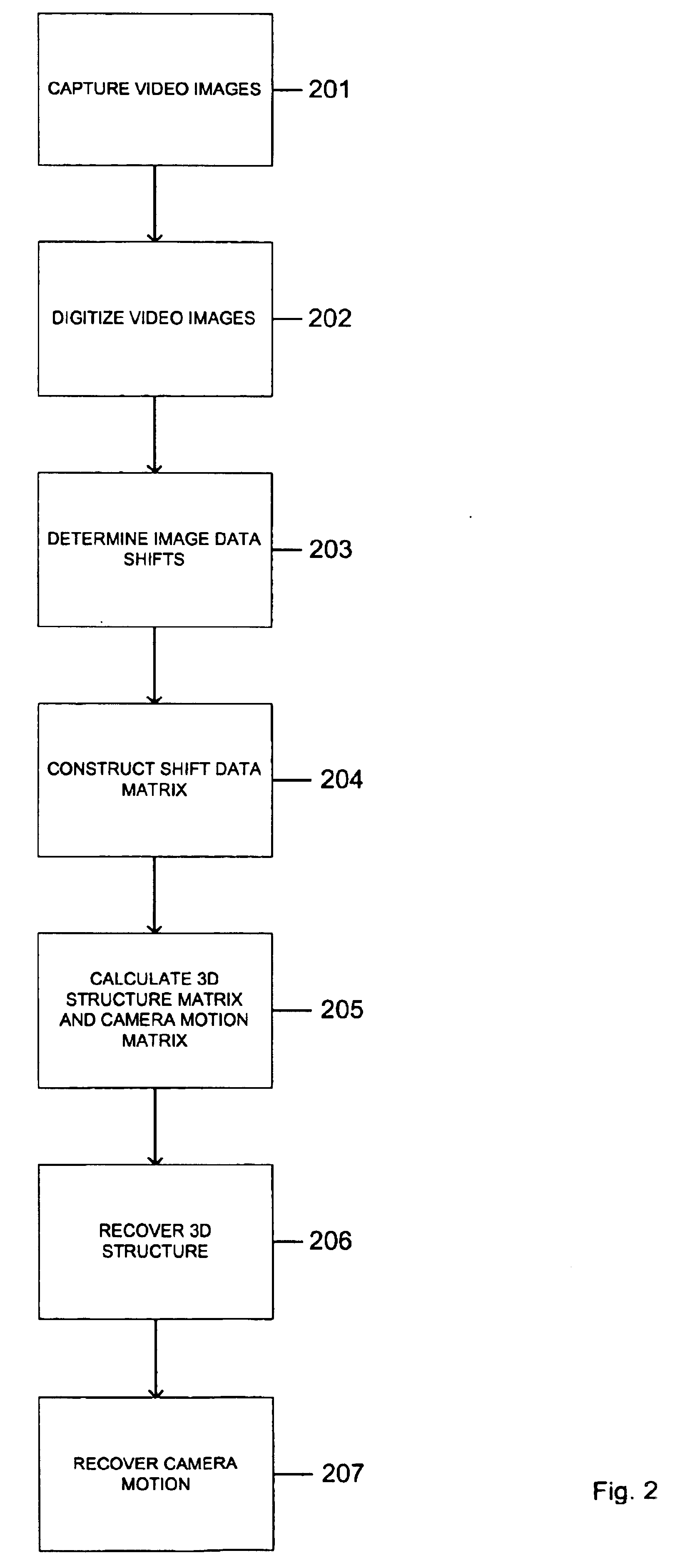Method for recovering 3D scene structure and camera motion from points, lines and/or directly from the image intensities
- Summary
- Abstract
- Description
- Claims
- Application Information
AI Technical Summary
Benefits of technology
Problems solved by technology
Method used
Image
Examples
Embodiment Construction
Definitions
For purposes of this disclosure, the invention will be described in accordance with the following terms defined herein. The method of the present invention assumes that the calibration is known and takes the focal length to be 1 (wlog). Modifications to the method for uncalibrated sequences will be discussed later.
Assuming a sequence of Ni images. Choose the zeroth image as the reference image. Let Ri, Ti denote the rotation and translation between this image and image i. Parameterize small rotations by the rotational velocity ω≡(ωxi,ωyi,ωzi)T. Let [Ti]2≡(TxiTyi)T.
Let a 3D point P transform as P′=R(P−T). Assume Np points and NL lines tracked over the sequence. For clarity, we use a different notation for the tracked points than for the pixel positions in the intensity images. Let qmi≡(qx,qy)mi denote the m-th tracked point and Ali≡(α,β,γ)lTi denote the i-th line in the i-th image. Let {overscore (q)}≡(q;1)T. Let R*q denote the image point obtained from q after a rotation:...
PUM
 Login to View More
Login to View More Abstract
Description
Claims
Application Information
 Login to View More
Login to View More - R&D
- Intellectual Property
- Life Sciences
- Materials
- Tech Scout
- Unparalleled Data Quality
- Higher Quality Content
- 60% Fewer Hallucinations
Browse by: Latest US Patents, China's latest patents, Technical Efficacy Thesaurus, Application Domain, Technology Topic, Popular Technical Reports.
© 2025 PatSnap. All rights reserved.Legal|Privacy policy|Modern Slavery Act Transparency Statement|Sitemap|About US| Contact US: help@patsnap.com



